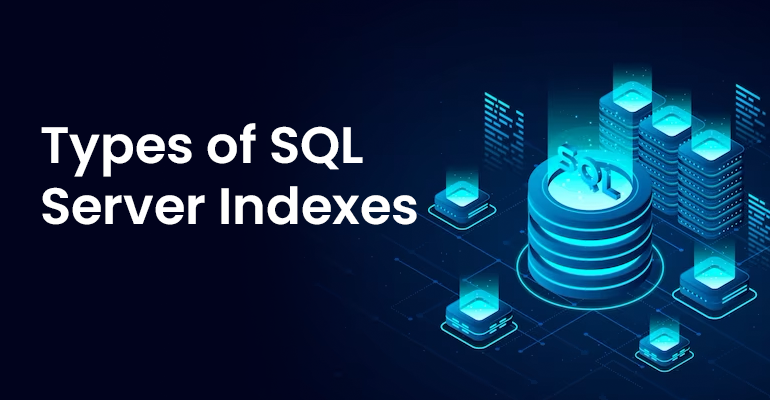An index in SQL Server is a structural element associated with a table or view that can be in-memory or on disk. Its major use is to rapidly identify certain sets or rows within a table or views. Indexes are essentially individual lookup tables that help the database engine retrieve data more efficiently.
The different types of SQL Server indexes and their specific functions in improving database performance will be discussed in detail in this article.
Types of SQL Server Indexes
There are various types of SQL Server Indexes. They are:
Clustered Index
A Clustered Index is an essential tool for organizing and structuring data in a table based on its key values. There is usually only one Clustered Index per table, which simplifies data storage into a single, well-organized sequence. This type of SQL Server index is especially useful for tables when significant and frequent data updates are needed.
When there is no set order for the data in a table, it is called a heap to emphasize that there is no particular way that the data should be arranged. A streamlined and well-organized structure is ensured for enhanced database performance through the use of a clustered index, which helps with rapid data retrieval and maintenance.
Non-Clustered Index:
It functions as a distinct structure from the actual data rows. These non-clustered key values in SQL Server are covered by these indexes, which each have a pointer to the related data row. The efficiency of some queries that clustered indexes do not cover is improved by non-clustered indexes, which make it simple to include non-key components.
The primary distinction between non-clustered and clustered indexes is that the former store indices in one location and data in another, while the latter sort data rows according to key values.
Column store Index
The industry standard for storing and accessing massive SQL data warehousing fact tables is a column store index. This type of SQL Server index is specifically built for high-performance queries with large amounts of data, and it stores data in a column-based structure. It provides high compression rates and drastically lowers storage costs, which leads to effective input-output processes and overall improved performance.
Column-store index storage allows for faster processing of data in smaller footprints than row-oriented storage, resulting in query performance that is ten times higher. Because of its better compression of values from the same domain, it performs better in analytics than other SQL indexes.
Hash Index
In SQL Server, a hash index is a kind of index that consists of slots that contain pointers or arrays of N buckets, each of which holds a row. It makes use of the Hash function F(K, N), where N is the number of buckets and K denotes the key.
The function associates the key with the appropriate bucket in the hash index. The memory address of the linked list containing the matching elements is stored in eight bytes in each bucket of the hash index.
Unique Index
SQL Server’s unique index acts as a protection, ensuring that the index key does not contain any duplicate values. This thorough validation ensures that each individual row within the table has a distinct identity. This function is very useful in cases where users want unique values for every data entry, hence maintaining the accuracy of data in specified table columns.
Furthermore, the unique index provides supplementary information about the data table, which aids in query optimisation. It promotes rapid data retrieval and analysis by offering a full perspective of the uniqueness of values and their organization.
Because it provides more information, the unique index is a useful tool for improving query performance and responsiveness while also preserving data accuracy and streamlining database operations.
Filtered Index
A filtered index is formed when a column contains a minimal number of relevant values for queries on the subset of values. A filtered index is constructed in SQL for one or more types of data when a table contains heterogeneous data entries. The query optimizer displays a filtered index for the question even if it does not cover any queries.
A filtered index is a new feature in SQL that is used to index a subset of the rows in a database, which means it applies a filter on Index and so increases the overall performance of the query. Compared to full-table indexes, filtered indexes result in a reduction in index storage costs and a deduction for index maintenance costs.
With a filtered index, the overall effect of data alteration is reduced because it is updated only when a new record is added or when the index’s data is affected.
Conclusion
In conclusion, SQL Server provides a variety of index types to improve database performance and accelerate query processing. To grasp these Types of SQL Server Indexes, preserve database integrity, and achieve peak performance, you must receive SQL Server training in Chennai.
Choosing the right kind of index is essential to maintaining database integrity and achieving exceptional performance.
